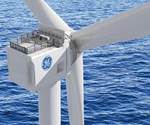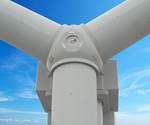LM Wind Power manufactures longest wind turbine blade
The 107-meter-long blade has been designed for GE’s Haliade-X 12-megawatt offshore wind turbine.
LM Wind Power, a GE Renewable Energy business (Kolding, Denmark) has announced that it has manufactured a 107-meter-long wind turbine blade at its Cherbourg, France factory. The LM 107.0 P, the first wind blade to be manufactured that is longer than 100 meters, will now proceed with post-molding finishing touches before undergoing rigorous testing and validation to demonstrate its ability to withstand more than 20 years of operation offshore, the company says. The blade has been designed for GE’s Haliade-X 12-megawatt offshore wind turbine, said to be the world’s most powerful wind turbine to date.
In January, GE Renewable Energy announced that it will install the first Haliade-X wind turbine prototype in Rotterdam, Netherlands during summer 2019.
“The LM 107.0 P is one of the biggest single-components ever built. This is an amazing achievement not only for LM Wind Power and GE Renewable Energy, but for the entire wind industry,” says Lukasz Cejrowski, LM 107.0 P project director at LM Wind Power.
“This achievement was made possible by our team of highly passionate people developing technology and manufacturing processes, to revolution yet again the offshore wind industry with ever-larger and more reliable rotor blades — thus capturing more wind and ultimately delivering an even lower levelized cost of energy!” says Alexis Crema, VP, offshore, at LM Wind Power.
In March, GE installed its two-blade Cypress 5.3-megawatt prototype in Wieringermeer, Netherlands.
Related Content
-
Drag-based wind turbine design for higher energy capture
Claiming significantly higher power generation capacity than traditional blades, Xenecore aims to scale up its current monocoque, fan-shaped wind blades, made via compression molded carbon fiber/epoxy with I-beam ribs and microsphere structural foam.
-
Materials & Processes: Fibers for composites
The structural properties of composite materials are derived primarily from the fiber reinforcement. Fiber types, their manufacture, their uses and the end-market applications in which they find most use are described.
-
Materials & Processes: Composites fibers and resins
Compared to legacy materials like steel, aluminum, iron and titanium, composites are still coming of age, and only just now are being better understood by design and manufacturing engineers. However, composites’ physical properties — combined with unbeatable light weight — make them undeniably attractive.

.jpg;width=70;height=70;mode=crop)











